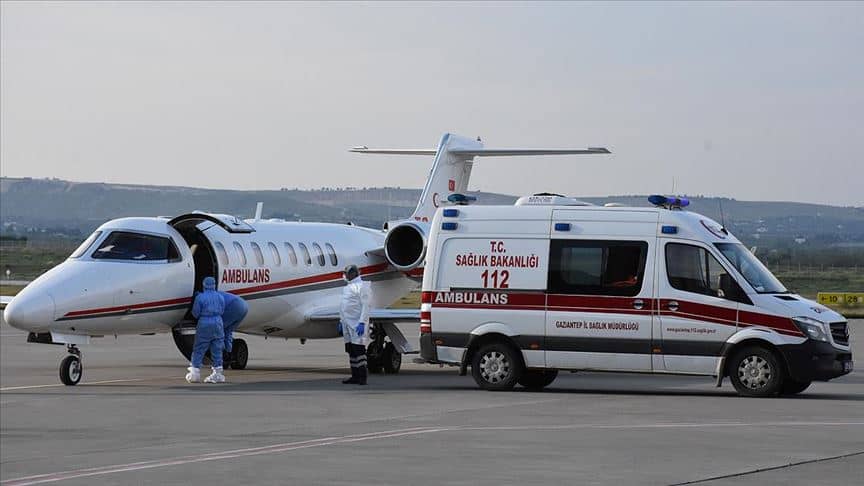
COVID-19 Exclusive: Special Air Ambulance Procedures
COVID-19 Exclusive: Special Air Ambulance Procedures
Considering that coronavirus can spread easily by air and close contact, health equipment to be prepared should be determined focused on the isolation of the patient from the external environment. In such cases, the air ambulance is equipped with negative pressure isolation stretchers or extra equipment such as tents, masks, gloves, visors and overalls. Thanks to the isolation stretcher or special tents, the spread of the virus to the outside environment is prevented. Such equipment can be quickly installed on Learjet 45XR air ambulances.
.jpg)
COVID-19 and Private Jet Charter
In cases where the patient can move freely, the low weight, ergonomic and versatile modular tent system with configuration flexibility is known as one of the best choices for such special situations. The PVC of the inner tent is not only flame resistant; It has been tested for tearing when overstretched and is impervious to biofluidics and infectious agents.
Designed to transport one patient at a time, the tent has a negative pressure guard that completely separates the patient from the aircraft and crew. The patient enters the tent via a foldable airlock. This creates a tunnel where the patient can walk or be transported with the iso-pod if he is able to walk. The airlock is stored away and the unit is sealed during flight. Once inside the tent, the patient can sit down and move freely. The mission team will ensure that the necessary medical equipment is provided to the tent, as well as the necessary food and drinks for the patient.
There is also a disposable toilet inside the tent. All body fluids are solidified using special chemicals. After the mission, this is burned along with all the equipment the patient is in contact with. Personal protective equipment used by the team during the patient's embarkation and landing is placed in separate containers, disinfected, placed in another container, re-disinfected and then taken into separate special bags for incineration on arrival.
It is also important to have an FFP3 filtration unit operating at 12 cycles per hour as recommended by the CDC. The team also uses additional gloves and Tychem sleeves to provide at least two layers of protection. Hermetic ports allow cables to reach the patient for continuous monitoring of non- invasive blood pressure, O2 saturation, electrocardiogram and temperature.
Negative pressure isolation stretchers are known as the best option in cases where the patient's movement is limited and requires immediate follow-up and intervention.
.jpg)
Private Jet Flight Process
While the ambulance is rented, the doctor must provide information about the positive test result of the patient, if any, and if the test has not been performed, the observations indicating that the patient is suspected of being infected must be presented. If it is suspected that the companion accompanying the patient is also infected due to close contact, this information should be stated before renting a private ambulance. In this case, an isolation stretcher or tent can be provided for the attendant, considering the movement situation.

